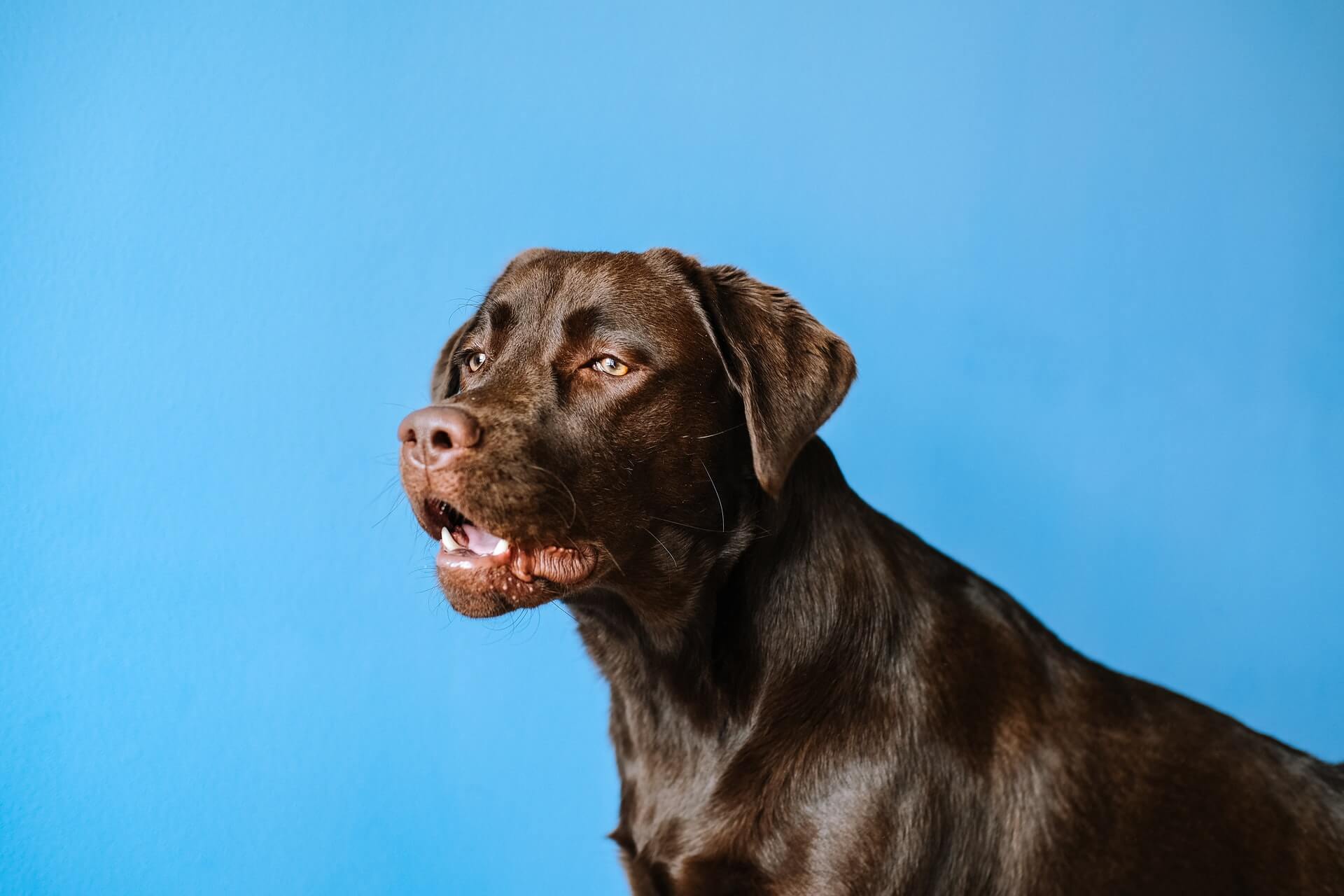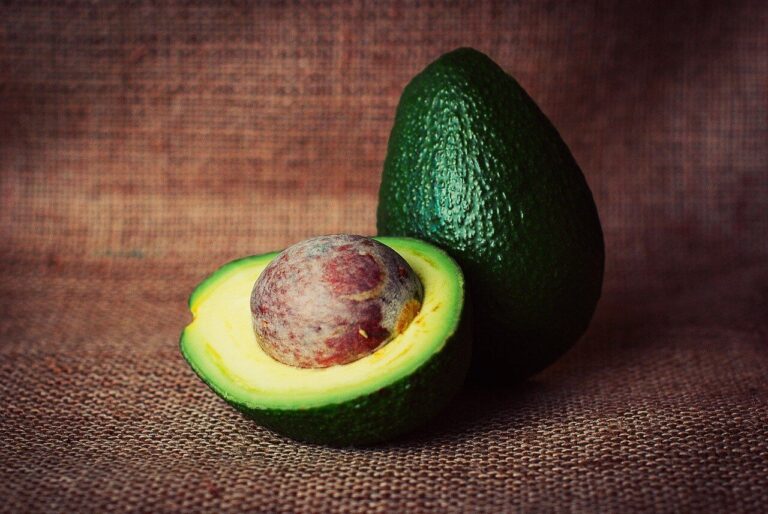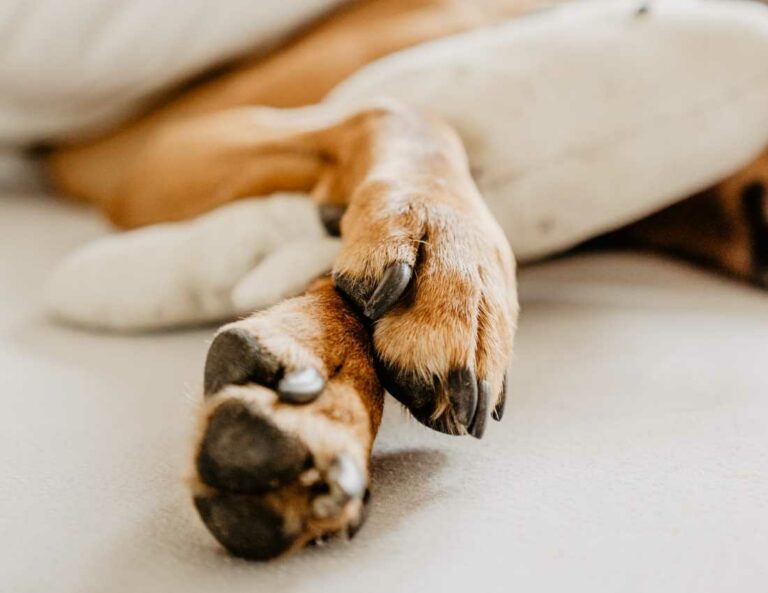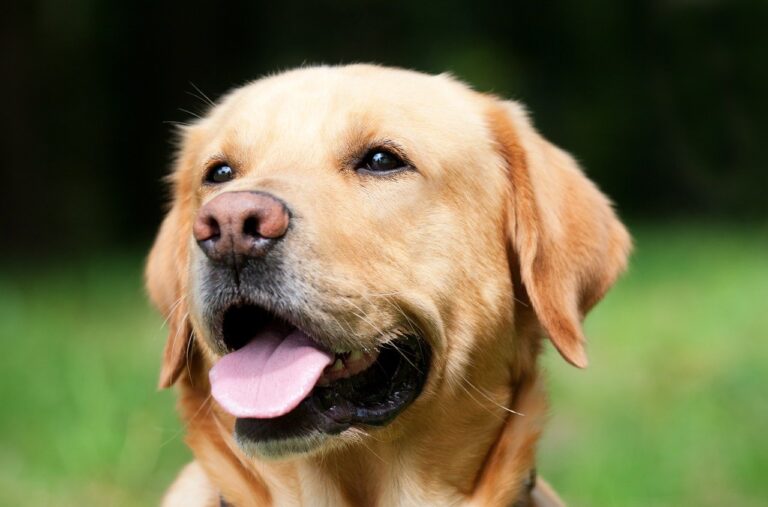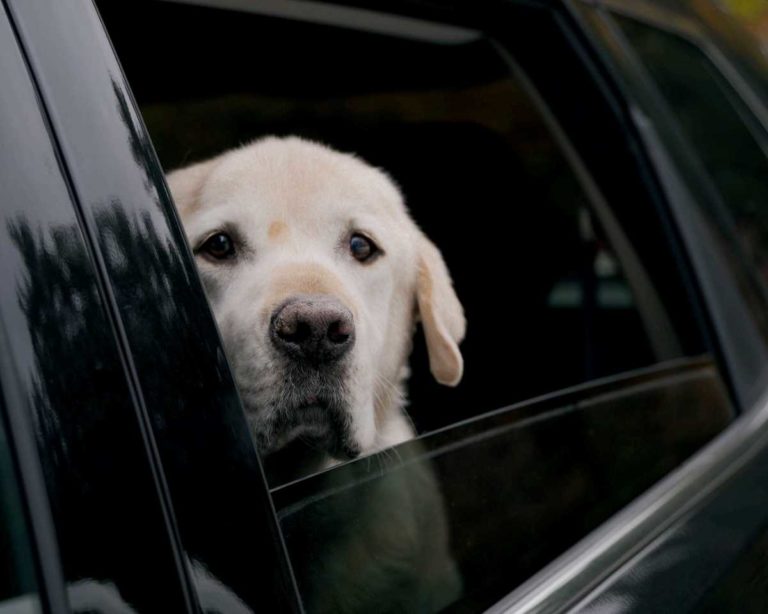For Labrador owners dealing with their dog’s shedding issues, you might be wondering if it’s ever a good idea to shave your dog, especially in warmer weather.
Do Labrador Retrievers need haircuts in the summer or should they be shaved?
Labradors do not need haircuts, and their fur should definitely not be shaved. The Labrador double coat provides protection in both summer and winter and is a necessary feature for the health of your dog.
We don’t recommend a Labrador haircut be part of any regular grooming schedule, as Labs are fairly simple to groom at home without needing haircuts or to be shaved.
(This article may contain affiliate links. As an Amazon Associate I earn from qualifying purchases. Learn more)
We’re going to go over more about the benefits of the coat of the Labrador Retriever, why it’s not necessary or recommended to shave them, and the difference in grooming between Labs and other similar breeds, such as Labradoodles and Goldendoodles.
Labrador Haircuts? Why You Should Never Shave Your Lab
Features of the Labrador Retriever’s Coat
The Labrador Retriever has been bred for several hundred years to have an amazing double coat, which helps them excel in many areas, especially water retrieval.
In addition to being glossy and beautiful, this double coat provides protection for the dog against cold air temperatures, as well as while retrieving in cold water.
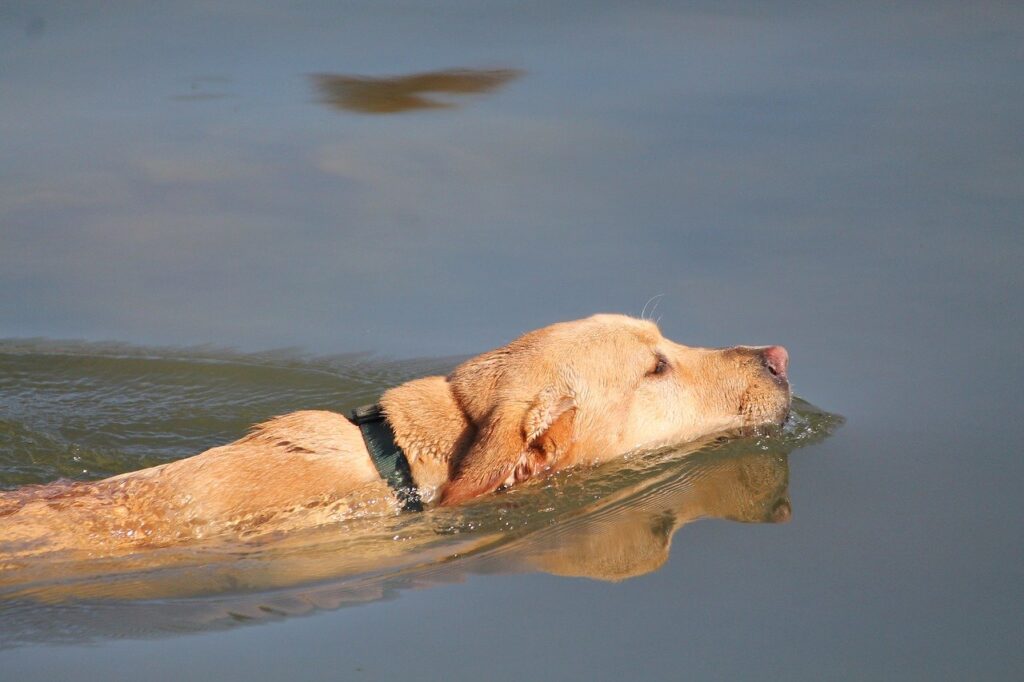
As an athletic, outdoor-loving dog, the Labrador’s double coat also gives them protection against thick brush, tall grasses, and harsh environments they might be working or playing in.
In addition to other features such as their webbed feet and dew claws, which can help them with swimming and stability on ice, the coat of the Labrador is made for cold weather, but can also provide protection for their skin from the hot summer sun.
Since the Lab’s coat is a critical part of the dog’s appearance and ability to perform the tasks inherent in their breeding, it’s NOT recommended that you shave their coat down. They will lose the benefit of this protection in both winter and summer temperatures.
Why You Should Never Shave a Labrador’s Coat
It’s not a good idea to ever shave your Labrador’s fur or to try to do a Labrador haircut.
If you were to shave down the coat of your Lab, you would be exposing them to both hot and cold temperatures without the thickness of their coat to protect them.
Your Lab would also lose the protective layer provided by their coat when they’re engaging in outdoor activities, such as running through tall grass, hiking through forests, and retrieving through brush. They could be cut or scratched throughout their body.
This coat is extremely important to the Lab’s performance in upland game and waterfowl hunting.
Conditions can be so rough, and the coat so critical to the dog’s health and ability to hunt well, that many Lab owners will put an additional protective dog “jacket” or coat over their Lab while they’re in extremely sharp or thick conditions.
Our Labradors’ faces (where they have much less fur than the rest of their bodies) would occasionally become scratched or scraped in spots during long days of pheasant hunting, but the rest of their bodies would be well-protected by their thick Labrador coat.
If you shaved your Lab or gave your Labrador a haircut, this could be what happens to their entire body if you have them outdoors in thicker or harsher conditions.
Even if your Labrador is a happy sofa-sleeper who doesn’t spend much time hunting wild game, there are other benefits to having that beautiful Labrador coat.
Another reason not to shave your Labrador is that their thick otter-like tail is important in helping them navigate and steer in water, as well as swim. Labradors love the water, and you won’t be helping this by shaving their fur.
If you were to shave their tail, as part of shaving their coat, it would dramatically affect their performance in the water, cause your dog to struggle, and affect their ability to swim safely.
The only time shaving could be necessary for your Labrador is if they are at the veterinarian’s office and preparing for surgery, or if they have a medical condition affecting their skin which your vet recommends sections of fur be shaved for.
Sometimes vets will shave a certain area of the dog in preparation for an IV placement, or in order to be able to access the surgical site better. These would be done by your veterinarian in their office for medical reasons, and not in a grooming situation.
Grooming Tips for Labs
Labradors are one of the easiest breeds of dogs when it comes to grooming. They only require a regular schedule of brushing and occasional baths, as well as nail trims.
Most of this can be done at home and is relatively inexpensive to do. You can choose to go to the vet for nail trims if you find the process easier and less stressful for you and your Lab.
We have a guide to bathing and grooming tips for Labradors at home that will show you how easy it is to maintain your Labrador’s beautiful coat without much money or stress.
Labs really are a “wash-and-go” breed of dog.
Compared to other costs of owning a Labrador Retriever, grooming is low on the list of costs you might incur. There are many other categories for Lab owners that will likely cost you more money than Labrador grooming costs.
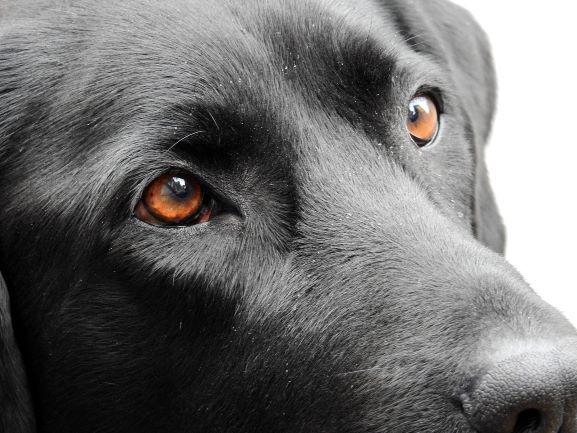
Shedding Issues with Labradors
If you’re concerned about shedding and wondering if shaving your Lab or giving your dog a Labrador haircut would help shedding, it won’t!
Your Lab’s coat might grow back in a very inconsistent way, and their shedding levels won’t be changed after it does by the fact you shaved them or gave them a haircut.
Labs do shed and can be extreme shedders. This is a common Lab-owner issue. There are a few better things you can do to help deal with their shedding that do not require a trip to the groomer or trying to give your Lab a haircut.
We recommend this brush to start with to help you get a handle on the shedding problem right away!
For more ways to get a handle on your Labrador’s shedding, we have many more tips in this article to help you solve your dog shedding problem without injuring your Labrador’s coat in the process.
What about other types of large breed dogs that Lab owners might also consider, such as Labradoodles and Goldendoodles?
Their grooming requirements are a bit different, so we’ll take a look at them next.
What About Haircuts for Labradoodles and Goldendoodles?
Labradoodles and Goldendoodles present different types of grooming issues than purebred Labradors.
Labradoodles are part purebred Labrador Retriever and part purebred Poodle.
We go into much more detail about the different breeding types in our guide to Labradoodles, but in a nutshell, there are many different varieties of Labradoodles. Some have a higher percentage of Labrador Retriever, and others are almost entirely Poodle.
There will be some differences in grooming requirements depending on what percentage of Lab/Poodle mix your particular dog is.
As discussed above, Labs should not be shaved, and do not require summer haircuts. Poodles, however, do frequently get shaved and are famous for having some pretty elaborate haircuts.
The higher the amount of Poodle in your Labradoodle dog, the greater the chance you are going to have some higher grooming costs, such as haircuts, and possibly shaving part or all of your dog in hotter weather.
The trade-off for Labradoodle owners is that although you may have higher grooming costs, you might have a dog that sheds less on a daily basis around your house.

If you’re trying to decide between a Labrador or a Labradoodle for your next dog, this is something to keep in mind.
Goldendoodles are another similar breed of dog that has different grooming needs than a purebred Labrador.
Like Labradoodles, Goldendoodles are created by breeding a purebred Golden Retriever with a purebred Poodle.
Golden Retrievers are similar to Labradors in that they do not ever need to be shaved and do not require haircuts. However, they have even longer and glossier fur than Labs and shed in extreme amounts.
Golden Retrievers also need to be brushed more often because their fur is much longer and can mat or tangle if not cared for with a good brushing and bathing schedule.
Similar to Labradoodles, Goldendoodles’ grooming needs will vary depending on the percentage of Poodle in your particular dog.
Generally speaking, the higher the Poodle, the more likely to need haircuts, but the less likely to shed.
Both Labradoodles and Goldendoodles will have higher grooming needs than a purebred Labrador Retriever, but if you’re aware of this going into it, you can prepare for it as one of the things to know before you bring home your new dog.
Though we’re partial to thinking Labrador Retrievers are the most amazing dog breed, we know they aren’t the best fit for everyone.
If you’re a person with severe dog allergies, you might find Labradoodles and Goldendoodles to be two breeds possibly less likely to aggravate those allergies. You can read more about what to look for and the truth about designer dogs in our article about Hypoallergenic Dogs.
Summary – Labrador Haircuts: Why You Should Never Shave Your Lab
Labradors do NOT need summer haircuts, and they definitely should not be shaved. The Labrador’s coat has many protective features, and shaving or cutting it could remove them.
It’s not a good idea to include a Labrador haircut in any part of your dog’s grooming schedule, as Labs are fairly simple to groom at home without needing haircuts or to be shaved.
If you have a medical issue with your Lab, or special circumstances you think might require different grooming for your Labrador, talk with your veterinarian’s office for their guidance towards your unique situation.
And check out the rest of our Labrador Health & Care section for more tips on Labrador life!

